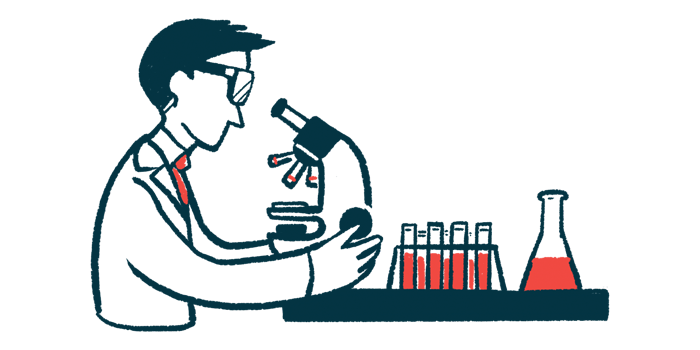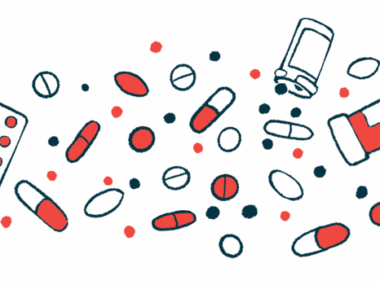Blocking LSD1, GSK3 could be treatment strategy for AML
Study of mouse, cell models provides 'compelling evidence' for combination
Written by |

Simultaneously blocking the activity of two proteins, LSD1 and GSK3, may be an effective strategy to treat acute myeloid leukemia (AML), an aggressive type of blood cancer, according to a study done in mouse and cell models.
“Our findings provide compelling evidence to support the testing of this combination therapy in AML patients, especially since both of the inhibitors involved are not only available but have been developed for human use and are currently being evaluated in the clinical trials,” Yang Shi, PhD, co-author of the study and epigenetics professor at the University of Oxford’s Ludwig Institute for Cancer Research, said in an institute news story.
The study, “Perturbing LSD1 and WNT rewires transcription to synergistically induce AML differentiation,” was published in Nature.
Progenitor cells in the bone marrow are normally responsible for making new myeloid cells, a type of immune cell. The growth of progenitor cells into mature myeloid cells is referred to as differentiation. In AML, this differentiation is impaired, so immature progenitor cells grow out of control without ever maturing, and ultimately drive cancer.
In theory, AML might be treated by prompting the immature cells to differentiate correctly into mature myeloid cells. In fact, a specific subtype of AML called acute promyelocytic leukemia is already treated in this way, which cures the cancer in more than 90% of cases. But it’s been difficult to extend this strategy to all other types of AML.
LSD1 blocking effective but toxic
Previous research has shown that blocking the protein LSD1 can prompt differentiation in AML cells. LSD1 is a type of enzyme that helps control which genes are turned on or off inside a cell. LSD1 inhibitors were tested in clinical trials, but when used on their own, these drugs needed to be given at fairly high doses that were ultimately too toxic to be useful as medicine. Here, researchers wanted to see if they could combine LSD1 inhibitors with other drugs to achieve differentiation with less toxicity.
“While LSD1 inhibitors have been developed and shown to induce differentiation in AML stem cells, they’ve had limited success in clinical studies owing to their toxicity when used alone,” said Amir Hosseini, PhD, study co-author and a postdoctoral fellow at Oxford Ludwig. “To limit that toxicity, we thought we’d try to identify other drugs that could synergize with LSD1 inhibitors to overcome the differentiation arrest and suppress the proliferation of cancer cells.”
Through a screen using cells in dishes, the scientists found that they could induce differentiation in AML cells using an LSD1 inhibitor called GSK–LSD1 combined with LY2090314, a drug that blocks the activity of the GSK3 protein. This protein acts like a brake inside cells, helping to slow or control processes like cell growth or energy use.
The researchers found that this treatment combination altered the genetic activity of cancer cells. In particular, it reduced activity of the WNT pathway, a signaling pathway that’s key for driving growth of many types of cancers.
“We are also encouraged by the observation that the gene expression signature induced in leukemic cells by this combination therapy correlates with that observed in the cancer cells of AML patients who live relatively longer,” said Hosseini.
The researchers then tested the treatment combination in mouse models of AML. In these models of aggressive cancer, most mice die within a few weeks. None of the mice who weren’t treated survived longer than about 80 days. Treatment with either GSK-LSD1 or LY2090314 on their own had minimal effect on survival, but when both were given in combination, survival was substantially improved, and most of the mice lived for 100 days or longer.
The researchers concluded that blocking LSD1 and GSK3 simultaneously might be a useful strategy for treating AML as well as other cancers that are marked by abnormal activation of the WNT pathway.
“As LSD1 and GSK3 inhibitors are both in clinical trials for a range of myeloid malignancies and advanced/metastatic cancer, respectively, their use as a combination therapy could conceivably enter the clinic in the near term,” the scientists wrote. “The unique ability of this combination strategy to suppress the … WNT pathway and … promote differentiation may also represent an unexplored therapeutic avenue of promise for numerous WNT-driven cancers.”







